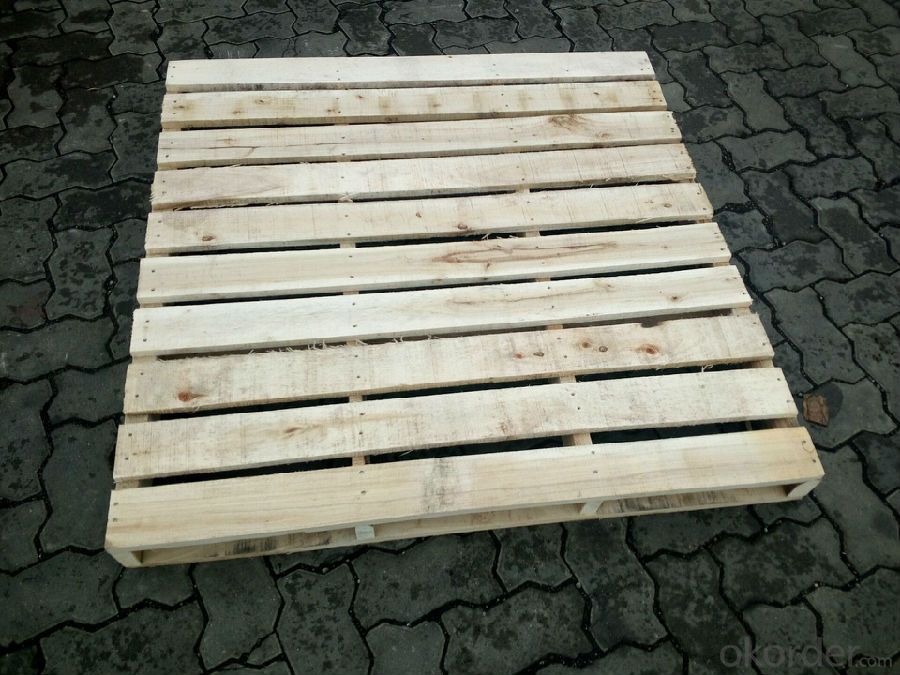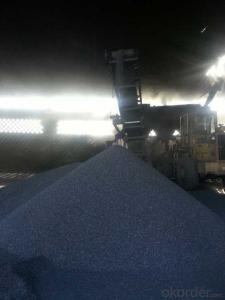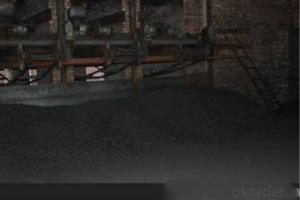Calcined Pitch Coke with Moisture 0.5 percent max
- Loading Port:
- Tianjin
- Payment Terms:
- TT OR LC
- Min Order Qty:
- 21 m.t.
- Supply Capability:
- 8000 m.t./month
OKorder Service Pledge
OKorder Financial Service
You Might Also Like
Introduction
Pitch Coke/Coal Tar Pitch is a kind of black brittleness and blocky piece, lustrously at normal temperature. It has special odour and poisonous and can be easily flame when melting, second-grade inflammable solid.
Pitch Coke/Coal Tar Pitch is obtained from powerfully processed coal tar. Compared to petroleum asphalt, the adhesiveness is better. Coal Tar Pitch is high quality tar production with high fixed carbon. It has excellent adhesion, waterproofing and resistance against seawater, oil and various chemicals. In these properties, it is much better than petroleum asphalt tar.
It can be used to produce painting, electrode, pitch coke, and tar felt. It also can be used as fuel and the raw material of asphalt carbon black.
Features:
The morphology, chemistry and crystallinity of recarburisers have a major impact on the overall casting cost. The combined application and cost benefits, which are derived through the use of Desulco, enable foundries to manufacture castings in a highly cost effective manner.
reduces
Recarburiser consumption
Power consumption
Inoculant consumption
MgFeSi consumption
Furnace refractory wear
Scrap rate
Tap to tap time
Slag inclusions risk
Chill
increases
Casting microstructure
Productivity
Process consistency
Carbon Recovery
Compared with calcined petroleum coke, acetylene coke and
graphite electrode scrap, Desulco yields the highest carbon
recovery and fastest dissolution time
Specifications:
CPC | |||
F.C.% | 98.5MIN | 98.5MIN | 98MIN |
ASH % | 0.8MAX | 0.8MAX | 1MAX |
V.M.% | 0.7 MAX | 0.7 MAX | 1 MAX |
SULFUR % | 0. 5MAX | 0. 7MAX | 1MAX |
MOISTURE % | 0.5MAX | 0.5MAX | 1MAX |
Pictures:




FAQ:
1.MOQ:2 Containers |
2.Size:1-3mm,1-5mm,2-6mm,3-5mm and as the customer's requirement |
3.Packing: 1 ton jumbo bag or 25kgs paper in bag |
4.Payment:T/T or L/C at sight |
5.Delivery time: within 15 days after receiving the deposit |
6.Usage: it is as carbon raiser,widely used in steelmaking,casting,casting iron,steel foundry,aluminum metallury. |
- Q: What are the advantages of carbon-based fertilizers?
- There are several advantages of carbon-based fertilizers that make them a popular choice among farmers and gardeners. Firstly, carbon-based fertilizers such as compost and manure are organic in nature, which means they are derived from natural sources and do not contain synthetic chemicals. This makes them environmentally friendly and reduces the risk of water pollution or soil degradation. Secondly, carbon-based fertilizers are rich in organic matter, which improves the soil structure and enhances its ability to retain water. This can be particularly beneficial in areas with low soil fertility or frequent droughts, as it helps to conserve moisture and prevent nutrient leaching. Furthermore, carbon-based fertilizers promote the growth of beneficial microorganisms in the soil. These microorganisms break down organic matter and release essential nutrients in a slow and gradual manner, ensuring a steady supply of nutrients to the plants. This improves overall plant health and reduces the risk of nutrient imbalances or deficiencies. Additionally, carbon-based fertilizers are cost-effective in the long run. While they may require more initial effort and time to produce or source, they can be produced on-site through composting or obtained from local sources such as farms or livestock operations. This reduces the need for expensive chemical fertilizers and minimizes transportation costs. Lastly, carbon-based fertilizers contribute to carbon sequestration and help combat climate change. By using organic waste materials as fertilizers, we divert them from landfills where they would emit greenhouse gases. Instead, they are recycled back into the soil, increasing its carbon content and promoting soil health. Overall, carbon-based fertilizers offer numerous advantages in terms of sustainability, soil fertility, cost-effectiveness, and environmental impact. Their use can contribute to healthier plants, improved soil quality, and a more sustainable and resilient agricultural system.
- Q: How is carbon used in the electronics industry?
- Carbon is used in the electronics industry in various forms, such as carbon nanotubes and graphene, to enhance the performance of electronic devices. These carbon-based materials possess excellent electrical conductivity, high strength, and thermal properties, making them ideal for use in transistors, batteries, capacitors, and other electronic components. Additionally, carbon is used as a crucial element in the manufacturing of printed circuit boards and as a key component in the fabrication of LCD screens and touchscreens.
- Q: Iron and steel are different in terms of carbon content
- That is, high manganese content, less nickel or nickel free stainless steel. This stainless steel market costs more than 1000 yuan per ton of stainless steel with nickel. Some dealers is the use of good people are not on the stainless steel magnet suction misunderstanding, to deceive consumers, so the price as high with expensive stainless steel.There are more than 100 kinds of stainless steel, and the characteristics and functions are different. General decoration, landscape, sculpture using austenitic stainless steel. Because of the low thermal conductivity of austenitic stainless steel, using it as a kettle, wok, rice cooker is not appropriate, will use a lot of energy, but also to extend the boiling water cooking time. Using ferritic stainless steel as a wok and rice cooker, not only has excellent corrosion resistance, but also its thermal conductivity is nearly half higher than that of austenitic stainless steel.
- Q: What is carbon offsetting in the energy sector?
- Carbon offsetting in the energy sector refers to the practice of balancing out the release of carbon emissions into the atmosphere by investing in projects that reduce or remove an equivalent amount of carbon dioxide from the atmosphere. It aims to neutralize the environmental impact of energy production and consumption by supporting renewable energy projects, reforestation efforts, or other initiatives that reduce greenhouse gas emissions.
- Q: How does carbon contribute to air pollution?
- Carbon contributes to air pollution primarily through the combustion of fossil fuels. When carbon-based fuels such as coal, oil, and natural gas are burned for energy, they release carbon dioxide (CO2) into the atmosphere, which is a greenhouse gas that contributes to global warming and climate change. Additionally, incomplete combustion of these fuels can produce other pollutants such as carbon monoxide (CO), volatile organic compounds (VOCs), and particulate matter, which all have detrimental effects on air quality and human health.
- Q: Stability, primary carbon, two carbon, three carbon, four carbon
- (2) due to free radicals generated in the outer layer of only 7 electrons, eight corner structure did not reach saturation, so it is an electron deficient species, while methyl (or alkyl) is an electron donor groups can alleviate the lack of this kind of electron, so that the stable free radicals, free radicals and carbon alkyl substituents on the more, the more stable free radical. And more stable, more easy to generate.
- Q: Organic matter is converted from organic carbon. Why is humus represented by carbon instead of converted?
- Therefore, only there is a certain relationship between soil carbon content and soil organic matter, high carbon content of soil humus certain, but it does not explain the soil organic matter, because organic matter contains not only the humus, also contains many other organic substances are not decomposed.
- Q: Can carbon 14 identify the age of porcelain?
- Identification of porcelain by carbon 14 is not very accurate.The so-called carbon fourteen assay, radiocarbon dating, uses the carbon fourteen, which is widely found in nature, to measure the age of animals and plants. In prehistoric and ancient, the smaller the impact of human activities on the earth's environment, and carbon in nature fourteen proportions remain constant, animals and plants in the survival time, due to its in vivo The new supersedes the old. sake, carbon fourteen also remained constant; however, the once dead, in fourteen carbon will continue to decay, the half-life is 5730 years, in the sealed state and the outside world is obviously different, which is the principle of carbon fourteen dating. We must note that animals and plants belong to the organic matter. However, most cultural relics, such as porcelain, pottery and bronze, are inorganic. Therefore, the application of carbon fourteen dating in archaeology is very limited.
- Q: What's the difference between carbon steel pipes and stainless steel pipes and seamless steel tubes?
- Call is a weld seam steel tube, so that you understand it!
- Q: What is the boiling point of carbon?
- The boiling point of carbon, an element that is not metallic, is determined by its allotrope. Carbon exhibits various allotropes, such as graphite and diamond, each possessing distinct physical characteristics. Graphite, comprising layers of carbon atoms organized in a hexagonal lattice, lacks a boiling point because it directly transitions from a solid to a gas through sublimation. Conversely, diamond, composed of carbon atoms arranged in a three-dimensional lattice, also lacks a boiling point as it undergoes direct sublimation. Consequently, carbon, in its pure elemental form, does not possess a boiling point.
Send your message to us
Calcined Pitch Coke with Moisture 0.5 percent max
- Loading Port:
- Tianjin
- Payment Terms:
- TT OR LC
- Min Order Qty:
- 21 m.t.
- Supply Capability:
- 8000 m.t./month
OKorder Service Pledge
OKorder Financial Service
Similar products
Hot products
Hot Searches


























